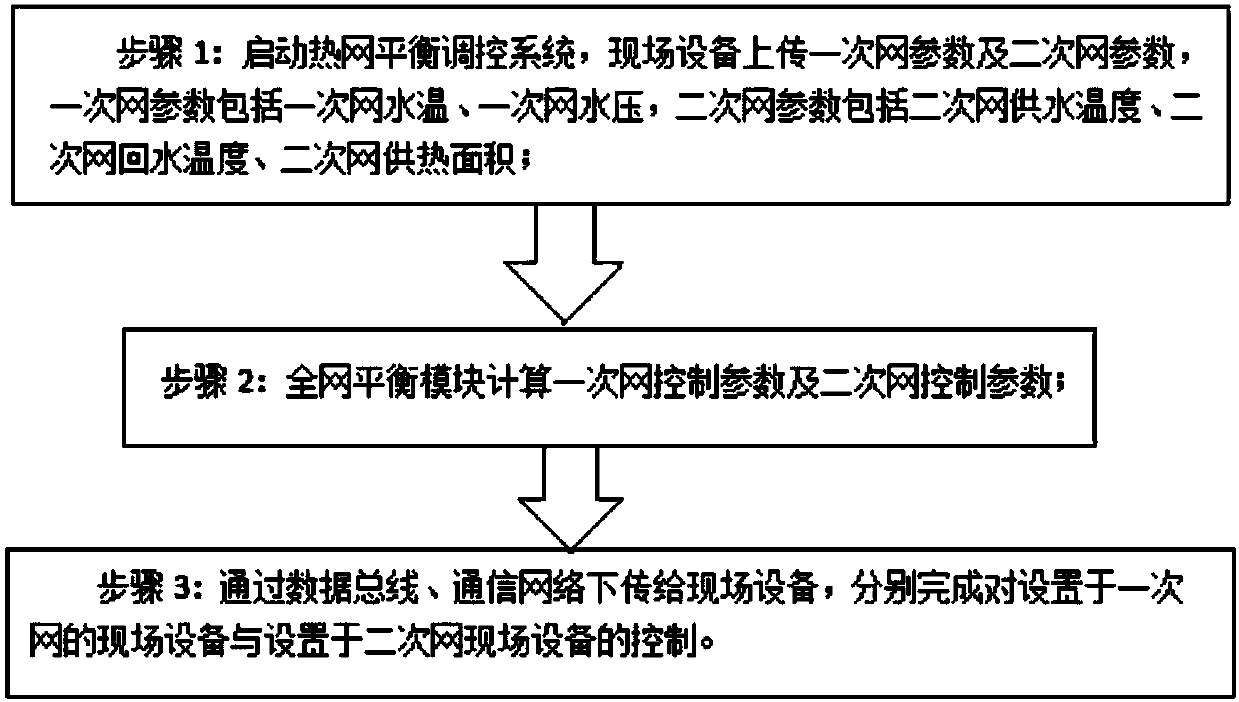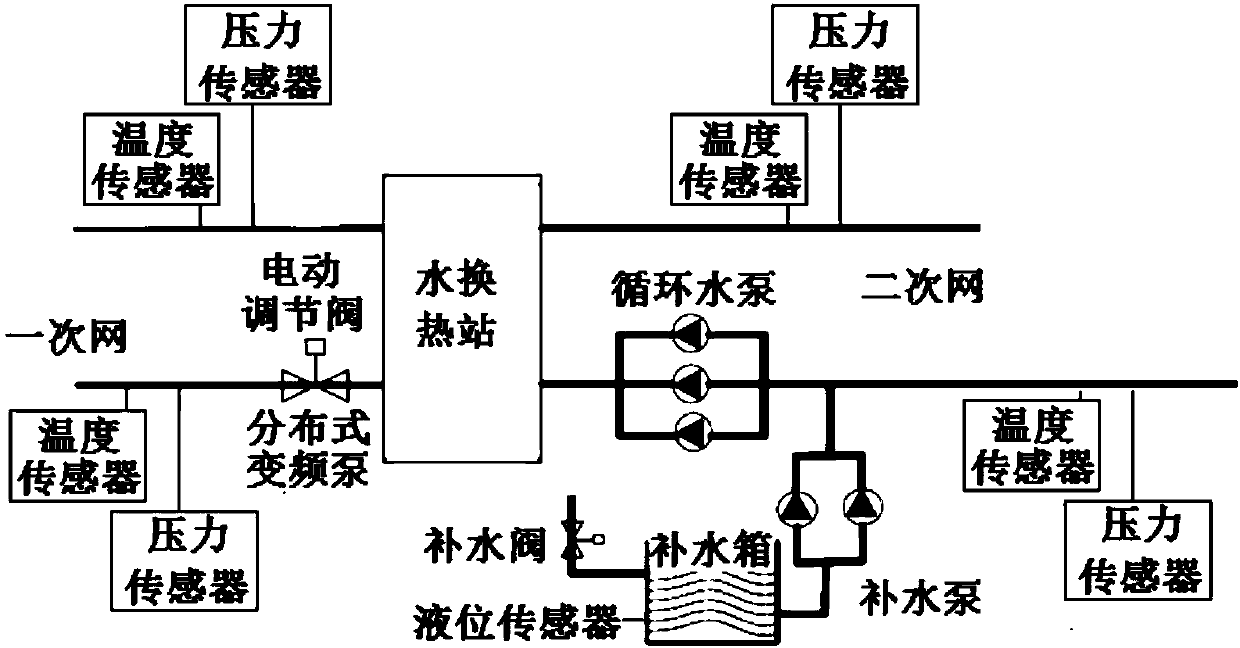Balance regulation and control method of heat supply network
A technology of heat balance and balance, applied in heating methods, household heating, household heating, etc., can solve the problems of outdoor temperature change interference, hydraulic imbalance, etc., to improve resistance to external temperature interference, improve heating effect, Good economic and social benefits
- Summary
- Abstract
- Description
- Claims
- Application Information
AI Technical Summary
Problems solved by technology
Method used
Image
Examples
Embodiment 1
[0039] This embodiment provides a heat network balance control system, such as figure 1 , the heat network balance control system is used in a central heating system, and the central heating system includes at least one heat exchange station and a primary network and a secondary network respectively arranged on both sides of the heat exchange station; the heat network balance control system includes The field device, the first upper computer, and the whole network balancing module connected with the field device and the first upper computer sequentially through a communication network and a data bus, and the whole network balancing module is arranged on a server in the second upper computer; as image 3 The field equipment includes a first sensor, an electric valve, and a distributed frequency conversion pump set on the primary network, a second sensor, a circulating water pump, and a water replenishment system set on the secondary network, and is used to control the electric v...
Embodiment 2
[0104] In this embodiment, on the basis of Embodiment 1, the automatic calculation method of the target temperature is replaced by the individual temperature control method of each thermal station.
[0105] Specifically: control the electric regulating valve or the distributed frequency conversion pump according to the actual measured value of the outdoor temperature and the set value library of the outdoor temperature and the return water / supply water temperature submitted by the owner. For an indirectly connected heating system, the adjusted parameter is the average temperature of the supply and return water of the secondary network, and the adjusted parameter is the valve position of the electric control valve of the primary network or the frequency of the distributed frequency conversion pump. When the heating system is disturbed by the outside world and the actual value of the controlled parameter is inconsistent with the given value, the deviation of the adjusted paramete...
Embodiment 3
[0109] In this embodiment, on the basis of Embodiment 1, the temperature difference between the supply and return water of the secondary network is replaced by the total flow of circulating water controlled by the secondary network: according to the specific conditions of the heating network or heating station, set per square meter per hour The required circulating water flow is based on the load of the heat exchange station. The load is the heating area to determine the set value of the total flow of circulating water in the secondary network of this station. This set value is the control target to realize the circulation of the secondary network. Water pump control.
[0110] The heat load time series of heat sources or heat exchange stations has nonlinear and chaotic characteristics, but the Hurst exponent of the series is between 0.5 and 1.0, so the series has long-term persistence, and the upward / downward trend of the previous time series usually indicates the downward tren...
PUM
 Login to View More
Login to View More Abstract
Description
Claims
Application Information
 Login to View More
Login to View More - R&D Engineer
- R&D Manager
- IP Professional
- Industry Leading Data Capabilities
- Powerful AI technology
- Patent DNA Extraction
Browse by: Latest US Patents, China's latest patents, Technical Efficacy Thesaurus, Application Domain, Technology Topic, Popular Technical Reports.
© 2024 PatSnap. All rights reserved.Legal|Privacy policy|Modern Slavery Act Transparency Statement|Sitemap|About US| Contact US: help@patsnap.com










